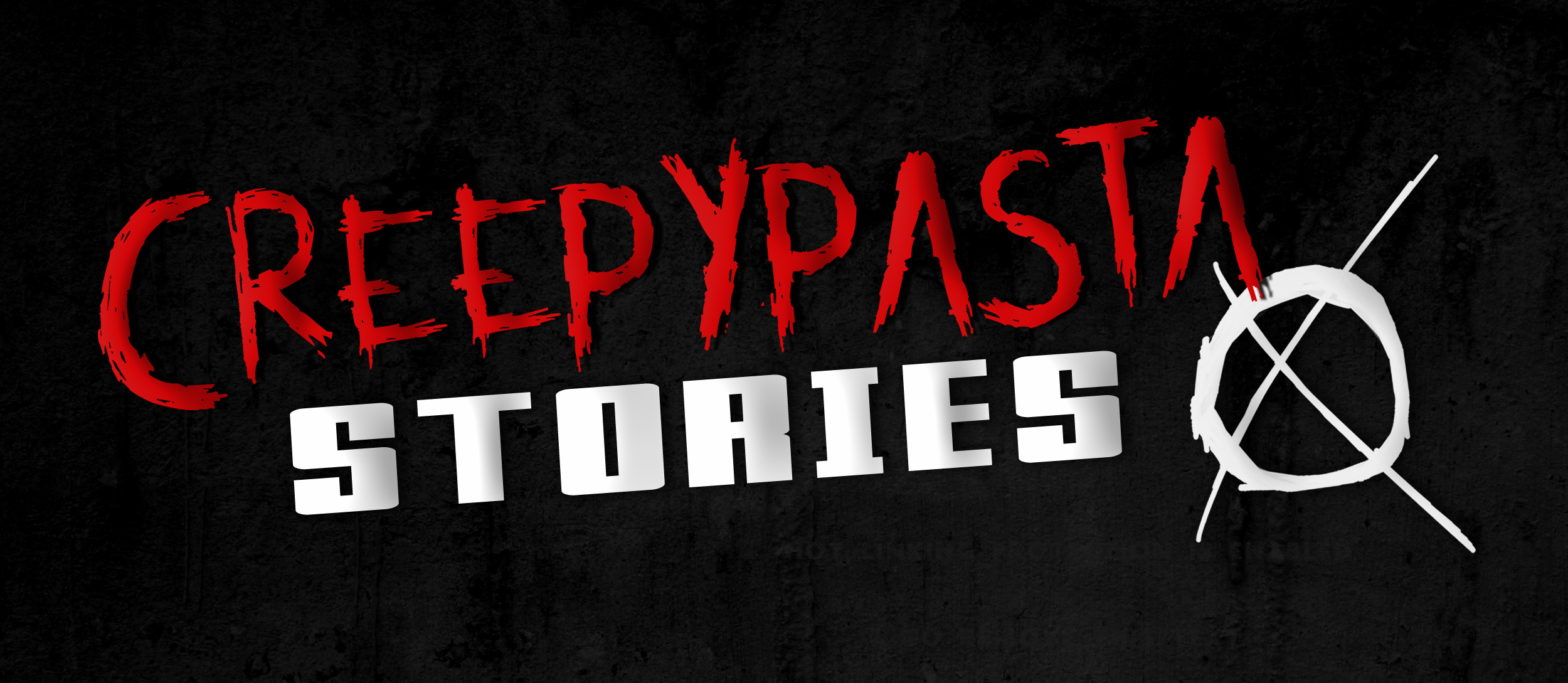
29 Mar The Gathering of Drowned Voices
“The Gathering of Drowned Voices”
Written by Benjamin CurlEdited by Craig Groshek
Thumbnail Art by Craig Groshek
Narrated by N/A
Copyright Statement: Unless explicitly stated, all stories published on CreepypastaStories.com are the property of (and under copyright to) their respective authors, and may not be narrated or performed, adapted to film, television or audio mediums, republished in a print or electronic book, reposted on any other website, blog, or online platform, or otherwise monetized without the express written consent of its author(s).
🎧 Available Audio Adaptations: None Available
⏰ ESTIMATED READING TIME — 25 minutes
On March the third, 1984, Detective Hjalmarsson of the Houghton Police Department acquired a stack of papers, freshly typed, from a deserted hotel room on the second floor of the Best Western, overlooking the canal. A thirty-two-year-old man, James H. Kowalczyk, had rented the room the preceding three nights. According to staff, Kowalczyk did not leave his room after arrival, at least not to their knowledge, until sometime after eleven p.m. on the night of March the second. He was a quiet guest. Occasionally they heard him talking to someone, presumably on the telephone.
Management alerted the police when a housekeeper found his abandoned belongings. In addition to the papers, he had left behind his suitcase, wallet, car keys, typewriter, coat, an audio cassette player, and five cassettes.
To date, no one has found any sign of what happened to Kowalczyk. He led a solitary life, unremarkable in any way, except for the manuscript he left behind. I obtained the original papers in early 1998 through an anonymous source.
***
WITNESS, JAMES H. KOWALCZYK
TO WHOM IT CONCERNS,
No instrument can match the seduction of the human voice.
The rhythms. The cadences. The pitches. The sliding and trembling vowels, followed by a click or a little patter of the tongue on the roof of the mouth. Words are incidental. Afterthoughts. Nothing can haunt you, or fool you, like the intonations of a voice.
I shouldn’t have played the cassettes. To think how long those frozen syllables lingered around the spools, wound up in fury and desperation. How did they not wear thin? The voices of Lahti and the Lady became clearer every time I listened. It was like the tape got stronger the more it spun.
I could have gotten a job somewhere far away, maybe San Francisco. Could have ditched the Midwest. I was not untalented. I could have made a life. But these two towns, Houghton and Hancock, crawling up steep hills on either side of the canal, would not relinquish their grip. The weathered brick smelter and its narrow smokestacks loomed along the horizons of my daydreams. Voices from the deep woods, dirt logging roads, and dripping mines of the Keweenaw Peninsula had called, reaching me through the cassettes, and I could not tune them out.
No help to think that way. From this window where I watch the snow whirl down into the black canal, I shudder at the red lights blinking in alternation from the opposing towers of the lift bridge—two mute watchers flashing dull signals. Then I glimpse my haggard reflection, half-realized in the window, a pale face from another dimension, full of regret for what could have been. But I have to keep going until I find her. I chose this path.
I lived here for a couple of years—well, in Hancock, on the other side of the canal, the gateway to the Keweenaw Peninsula. In all the United States, Hancock houses the largest proportion of Finnish-Americans, with their long names full of vowels and double consonants, almost always ending in “-nen” or “-la.” Some still call the place “Kuparisaari,” meaning “Copper Island.” A land of dense woods, rocky outcroppings, desolate beaches, harsh winters, sparse inhabitants, and old brick foundations besieged by moss and ivy, the Keweenaw Peninsula pokes into frigid Lake Superior like a displaced mass of human memory. Once you cross the Lift Bridge from Houghton to Hancock, you’ve entered an island adrift on the sea of time, tenuously tied to a neglected corner of the American mainland.
It was 1977. Until then I’d spent my entire life in Illinois, born and raised in Fox Lake, completing my undergraduate and master’s at DePaul. I was studying comparative religions at Suomi College while working part-time as a clerk at a law firm. They always gave me the shittiest work. I was a PHD candidate, for Christ’s sake, and they had me collating documents. They couldn’t figure out the settings on the new copier.
“Peter’s done. Someone needs to clean out his office,” Mr. Magnuson snapped beside the paper cutter where I stood clutching a handful of over-sized paper clips.
Peter Lahti has been there for thirty years. He had sued every auto-insurer in the Keweenaw. He’d won quite a few cases, some real big ones, representing employees and retirees of the Quincy Mine, the Red Jacket Mine, the Franklin Mine, the Cliff Mine—all of them closed. The firm used to joke that he had shut them all down. They went broke paying out his clients, they said. He had made plenty of enemies. Tons of admirers too. But he’d cracked. In 1970, something had crawled up between his ribcage and cut out the bottom of his heart.
His decline was steady, as if an anchor had tied to his collarbone, pulling his narrow chest and bony shoulders down toward hell. His eyes burned holes into the carpet, then flitted up past your head as he spoke, as if afraid his words would make a ceiling tile drop. I only saw his final two and a half years. A sinking ghost. The weight hung heavy. His neck strained to keep his eyes off the floor.
At first I thought he avoided eye contact out of arrogance, as if I were too lowly to acknowledge. After a couple months, I started to suspect something else. He knew he was a shadow. He knew how awful he was to behold. And he was afraid of infecting anyone else with his wraith-like wasting. After those first couple of months, I hardly saw him again. He would disappear into his office, behind the frosted glass panel of his closed door. A soft light would glow into the night. I would hear little clicks and muted voices. He’d be there when I left at five pm. The next morning, it would look like he hadn’t slept at all. In fact, at least three times, he wore the same clothing as the night before. But he wasn’t working any cases, not that any of us knew.
Magnuson and the others put up with him because of his legacy. They handed him documents to review, even though they’d already reviewed them. At times, they already had filed a brief before giving it to him. He didn’t notice. And he offered no comments. They kept paying his senior partner share, even though he contributed nothing. It was too sad for everyone. His last big case, the wrongful death lawsuit against the Quincy Mining Company, had fizzled out to nothing. His client, thoroughly discredited before trial, fled to Canada.
“He said there aren’t many files that need to be preserved,” Mr. Magnuson said, peering over his bifocals, sitting in a leather swivel chair. “There may be a few for storage. Check the dates. But most if not all can be shredded.”
I had seen the interior of Lahti’s office a handful of times over the past year—partial glimpses as the hunched man shambled in and out—a high-ceilinged room with shelves of legal tomes sagging along the walls, black and pale green filing cabinets, tall antique armchairs. I dreaded the prospect of sifting through the musty mess he’d left behind.
“He particularly mentioned materials from the Kukkula case,” Magnuson droned. “Interview cassettes. Destroy them.”
My job description did not include cleaning, but I had learned not to ask questions of Mr. Magnuson, so I accepted my assignment without inquiry or complaint. When he handed me a thick bronze key, his eyes dropped back to the brief in his hands. He swiveled away from me. I left.
It felt like walking into a sacred and forsaken past. The wood-paneled room was a compartment of Lahti’s mind, preserved against the vicious gravity that had assaulted his body. Newspaper clippings from seven years ago, and older, sat beneath paperweights. Why wasn’t Lahti cleaning out the office himself? Wouldn’t he know the documents better than anyone? These were questions I should have asked Mr. Magnuson. But I didn’t. The quiet office seemed like a convenient escape. I thought I could turn it into a two-day project, at least.
Sifting through the large filing cabinets was tedious, but did not take as long as I’d expected. By 4:15pm I was nearly done, having neatly arranged and labeled a stack of banker’s boxes by the door. That’s when I turned to the narrow green cabinet nestled against Lahti’s desk. I had to rummage around in his roll-out drawer to find the key, buried among a thousand unused pencils. The top drawer of the cabinet was empty. The bottom drawer was where I found them—those damned drowned voices that have never stopped spinning through the background of my uneventful life.
A precise hand had written “Kukkula v. Quincy Smelter” in black marker on each of the cassette cases. There were five subtitles: “Interview of Catherine Kukkula,” “Interview of Benjamin Faircrown,” “Interview of Foreman Seppanen,” “Interview of Catherine Kukkula, Part 2,” and “Interview of ———.” Someone had scribbled out the name of the last interviewee.
Had I known what I know now, I would have built a bonfire that night and watched until every inch of tape had melted. Of course, even had I tried, I’ll bet the voices would have slipped out through the flames, curling up inside the smoke, twisting green fumes into my nostrils, infiltrating my mind. You cannot kill voices like those.
In any case, it’s too late to reflect. The snow keeps folding into the black canal surface, like miniscule white feathers dissolving into a highway of obsidian. Soon I will walk the Lift Bridge, to what awaits me on the other side. I cannot stop now that I have returned.
Most of the partners had left the office. I pushed the first cassette into the player, shoved the panel shut, and clicked the button. Sitting in Lahti’s red high-backed armchair, I listened with the volume low. After some static, I heard voices. For sake of brevity, I will omit the tedious lawyerly questions and leave only what is necessary for context. I must note that Lahti’s voice sounded different from when I had heard him in real life. There was a crispness, a lilt, as if every time he spoke he expected his words to lead to an answer, or at least a course of action. In short, he sounded confident that a truth obtainable by language existed.
LAHTI: Interview of Catherine Kukkula. March the seventeenth, 1970, eight-o-clock a.m.
[The sound of shuffling paper.]
Do you, Mrs. Kukkula, agree to this interview being recorded for my own investigative purposes?
CATHERINE: I do.
LAHTI: I do not betray the confidences of my clients. Anything you say will not be shared unless you agree.
CATHERINE: Thank you.
[The sound of shuffling paper]
LAHTI: How long were you and your husband married?
CATHERINE: A year. Well, it would have been a year on the fifteenth of this month.
LAHTI: I’m sorry. And have you two always lived in Hancock?
CATHERINE: No, not always. I was born in Copper Harbor. Tom was from Ahmeek. We met in Houghton a year and a half ago. Then we moved across the canal, into Hancock, right onto Quincy Street, when Tom got his promotion.
LAHTI: At the Quincy Smelter, correct?
CATHERINE: Correct.
LAHTI: And is it still your belief that the operators of the Quincy Smelter are responsible for the death of your husband?
CATHERINE: I have no doubt.
LAHTI: And how did you come to this belief?
CATHERINE: Because one of them confessed to me.
LAHTI: What? [Lahti laughs] Why didn’t you share this before?
CATHERINE: Because I didn’t want to trouble you.
LAHTI: Trouble me? We could easily get such an admission into trial, depending on the nature of what was said. Did they put it in writing?
CATHERINE: No. One of them met with me.
LAHTI: When?
CATHERINE: A week ago. A week after Tom died.
LAHTI: How did this meeting come about?
CATHERINE: I went to Tom’s office.
[A pause. It seems the tape skips several seconds, but misses no dialogue.]
LAHTI: Go on.
CATHERINE: I found myself walking through the corridors of the office building. Tom had left his key at home. I was looking for his coat. I thought maybe he had left it in his office. I wandered to a strange wooden door at the back of a long hallway. I know I shouldn’t have opened it. But I couldn’t help it. I needed to find Tom’s coat. I worried he was cold. Even though he was dead, I worried he was shivering.
[She stops speaking for a moment. Glass clinks.]
Around a conference room table, I saw them, lit by a circle of dim fluorescent table lamps, discussing blueprints projected on the wall. One of them turned to look at me. The others didn’t seem to notice.
LAHTI: Who was there?
CATHERINE: The Board of Directors.
LAHTI: Of the Quincy Mining Company?
CATHERINE: I mean the real Board of Directors.
LAHTI: Go on.
CATHERINE: The one who turned to me. He was old. He was hunched. No one could have been that old. He told me I couldn’t be there. He would meet me at the lift bridge. So I walked there, to the middle of the bridge, to meet him. I don’t remember stopping at home, but I must have, because then I had my scarf with me. It was cold. The canal was frozen.
LAHTI: To meet whom?
CATHERINE: J.T. Blackdune, Senior.
[Sound of shuffling paper.]
LAHTI: I haven’t heard of him.
CATHERINE: I told you, he’s one of the directors—the real directors.
LAHTI: What do you mean?
CATHERINE: Her servants, Mr. Lahti.
LAHTI: Whose?
CATHERINE: The Lady of the Hollows.
A pounding on the office door made me jump. I clicked pause. Pretending to be absorbed with wiping down the narrow green cabinet, I looked up at Mr. Magnuson standing in the doorway.
“I don’t know why I knocked,” he muttered. “Habits. Funny things, aren’t they?”
Beneath his thick arched eyebrows a pair of eyes judged me.
“You don’t have to finish that tonight. It’s not urgent.”
“That’s okay. I’d rather get it all done at once,” I said without thinking. “I should be able to wrap up in the next couple of hours.”
Mr. Magnuson squinted as he placed his driving glasses on.
“Then you’ll be the last one out. Make sure to lock up.”
“Okay.”
I waited for the sound of his car rolling down the hill before resuming the tape. My hands were shaking. Once I had settled down, I gazed at a faded newspaper clipping tacked to a cork pencil-holder on the desk. The headline read, “Mechanical Engineer Dies in Accident at Quincy Smelter.” A photograph of Tom Kukkula showed a handsome young man with a thick blonde mustache.
I thought of going home, but the voice of Catherine would not leave my head. Never had I heard such mingled calmness and fright. She had to be insane. But if I did not hear the conclusion, I would not be able to sleep, haunted by the low tone she had used when she pronounced “Lady of the Hollows.” I had to hear just how crazy she was, in order to comfort myself. So I clicked the play button.
LAHTI: Who?
CATHERINE: Excuse me?
LAHTI: “The Lady of the Hollows.” Who is she?
CATHERINE: I don’t know what you’re talking about. I’ve never heard that name.
LAHTI: You just said it. You said they were her servants.
CATHERINE: No, I was explaining that Tom knew all of the safety protocols. He was the de facto safety educator at the smelter. There’s no way he could have fallen over the handrail, and not wearing any gear.
LAHTI: That’s not what you were saying, Ms. Kukkula.
CATHERINE: I know what I was saying. What are you trying to do? Are you trying to trap me? Aren’t you my attorney?
[Bursts of static. I have replayed this section of the cassette many times, as I believe a third voice begins to speak—very suddenly cut off. The voice is so faint, however, that no matter how much I magnify the volume, I never have made out whether it truly was someone else in the room, or nothing more than a radio in a car passing outside Lahti’s office.]
LAHTI: I didn’t mean to upset you. Please, go on.
I will spare you by saying that the rest of the interview proceeds without oddity. Catherine makes no more mention of sleepwalking, a secret board of directors, or the Lady of the Hollows. Lahti asks her questions about the accident and Catherine describes how Tom had been warning the company for months about safety concerns in the smelter. She goes into the specifics with an impressive attention to detail. She was every bit as intelligent as her husband, and evidently appreciated the intricacies of his work. If you listen close, you will notice hints of a wavering trepidation in Lahti’s voice. He no longer lilts. His sentences no longer seem confident of finding their endings. Looking back, I think it was his growing hesitation, the audible record of his thoughts succumbing to nothingness, that drew me in with a rope around my wrist. His faltering led me onward, against my will, to the edge of the well where intonations reverberate blind and disjointed—to where our words fail.
By the time I had finished the tape through its drawn-out and anticlimactic conclusion, the window of the office was pitch black. The wind whistled through a fissure in the frame. Lahti evidently had given up on caulking the thing. The sagging wooden building they used as an office had all sorts of problems like this. Wind was always sneaking in through the cracks. I don’t know why they didn’t move. How did Lahti tolerate the infernal whistling? I went to the supply room, found a half-used canister of caulk, and sealed it shut. The room became silent. So silent. I realized how alone I was.
Even if I walked home to my apartment up the hill, I would be no less alone. This place, the Keweenaw, with its peeling tar paper roofs and brick streets, was alien to me. The people, with their thick northern accents and dated clothing, were alien. And I’ve never been any good at making friends.
So I went back to the cassettes. I could not listen to more of Catherine, and I did not want to hear more about the smelter, so I grabbed the one labeled “Benjamin Faircrown,” as nothing I’d seen in the newspaper clippings gave me any indication as to who he was. In that silent room, that quieted chamber of Lahti’s mind, the static erupted like a volcano. I welcomed the grating disturbance and the voices that floated like ash-trails around me.
LAHTI: Interview of Benjamin Faircrown, March the nineteenth, 1970, one-o-clock p.m.
[A scratching noise, and the sound of the tape seemingly rewinding itself.]
Interview of Benjamin Faircrown, neighbor, March the nineteenth, 1970, one-o-clock p.m.
[Wind blows in the background. Birds chirp.]
LAHTI: Mr. Faircrown, I want to ask you about your neighbor, Catherine Kukkula.
BENJAMIN: Ya, of course. Anything to help.
LAHTI: How long have you been neighbors?
BENJAMIN: Oh, they moved in now, what was it, a year ago? She and her husband, Tom, good folk.
LAHTI: Did you ever notice any odd behavior?
BENJAMIN: What’s odd to you?
[The wind blows hard. The first half of what Lahti says is muffled beyond hearing.]
LAHTI: . . . reality. Did she talk to herself? Did she see things that no one else could see?
BENJAMIN: Sure, she talked to herself. Who doesn’t now and then? But she had a good head on her shoulders, especially considering all she’d gone through.
LAHTI: Like what?
[The wind stops. Utter silence.]
BENJAMIN: Don’t you know about her first husband?
A branch crashed on the roof. I heard it scrape the shingles as it slid, and I tried not to look out the window, out of an irrational fear that something outside would see me looking, and would turn its eyes on me. It was nothing but a branch.
LAHTI: No, she did not.
BENJAMIN: Seven years ago, almost to the day of Tom’s death, she lost Paul in a boating accident near Isle Royale.
LAHTI: How?
BENJAMIN: He ran a charter. But one night he went out by himself. No one knew why. He never came back. He washed up on the rocks.[1]
LAHTI: Did she ever talk to you about it?
[Loud squealing sounds. A long pause. When Benjamin resumes, his voice sounds different. He speaks low, as if afraid of someone overhearing.]
BENJAMIN: You shouldn’t blame her.
LAHTI: Blame her for what?
BENJAMIN: She came from Karelia[2], a persecuted land. Therefore, persecution is all she’s ever known.
LAHTI: She was born in Copper Harbor.
BENJAMIN: The Lady of the Hollows was brought by accident, from far away. When the fishermen realized what she was, they burned her with marks, then buried her in the cold. They concealed it. Tried to make everyone forget. Now, she calls her witnesses.
[Inexplicably, Benjamin’s tone becomes defensive.] This is no crime. Not under the laws of men and women. Not under the laws of any god. The witnesses go willingly. Every seven years, another testament. Her voice must not—cannot—drown.
LAHTI: Was it Catherine who told you about the Lady?
[The wind blows hard and there is a fluttering sound, like garments flying off a clothes-line.]
LAHTI: I asked if it was Catherine who told you about the Lady?
BENJAMIN: What?
From here repeats the pattern of Lahti’s earlier conversation with Catherine. Benjamin Faircrown denies having said anything about a woman from Karelia or a previous husband of Catherine’s. He gives credible and detailed descriptions of the Kukkulas’ unremarkable presence in the neighborhood.[3] [4]Finally Lahti, exasperated, losing the ability or will to ask further questions, shuts off the tape. You can almost see the leaden weight of his fingertip as it smashes the button in defeat.
I replayed both of the tapes, wondering if perhaps their words had been misheard or misunderstood. But they both had said those things they later denied. The tapes do not lie.
I thought with sadness of Lahti’s last seven years, loitering around this office with no direction, his inner compass demagnetized. If he continued to struggle with these delusional people, dealing with tragedy by way of strange but understandable dissociations, I could sympathize. I saw the beginnings of his ghost-like transformation. At least, this is what I thought at the time, before I had listened to the remaining cassettes.
LAHTI: Interview of Ed Seppanen, March the eighteenth, 1970, nine-o-clock a.m. Foreman. Quincy Smelter.
SEPPANEN: Hold on. Do you have to record all of this?
LAHTI: It’s for my own investigation. I double check for consistency. If I were to summarize the statements, I’d omit details and reword things according to my own inclinations. It would become my own narrative. That’s no help to anyone.
SEPPANEN: You didn’t record her did you?
LAHTI: Who?
[A chair screeches against the floor.]
SEPPANEN: Stop recording. Stop.
LAHTI: Settle down! Give me a second.
[The tape clicks. It clicks again. Static. Another click. More static. Finally, Seppanen resumes. He seems to be chanting in a rhythmic language.[5] [6] Then, abruptly, he stops.]
SEPPANEN: He stood on top of the guardrail and threw himself in, just like I said in the report. He stretched his arms out wide, then into the flames. It reminded me of what my uncle had said about all these accidents over the years: testament by water, testament by fire; none find anything but whispers, wherever it is they go.
LAHTI: Who said that?
SEPPANEN: Just old men’s stories, Mr. Lahti. Nothing more.
[The chair scrapes against the floor. Footsteps.]
LAHTI: You’re leaving?
SEPPANEN: There’s nothing more to say.
I skimmed through the files. Ed Seppanen had worked at the smelter for eighteen years. Not long after the interview, he moved to Sault Ste. Marie. His personal history was normal. He had three kids. He liked to fish for northern pike.
I remember that I hesitated a long time before inserting the cassette with the second interview of Catherine. In truth, I was becoming terrified of her. There didn’t seem to be a reason. Yes, she may have been going mad, but there was nothing overtly incriminating about anything she had said. Perhaps it was the sound of Lahti’s voice whenever he mentioned her. It quavered, ever so slight.
I wondered where Lahti was at that moment. I felt a desire to speak with him. Maybe it was because whenever the tapes clicked off, I felt so profoundly alone. I needed to know that someone else had heard these things. I needed to hear a confirming voice that wasn’t on a cassette.
It was getting late. I already had missed my routine bedtime, meaning that no matter when I turned in, tomorrow would be a drag. I had come this far. I might as well finish what I had started. I inserted the tape.
[The sounds of furniture being rearranged. A long silence.]
CATHERINE: Why do you need to interview me again? I told you everything the first time.
LAHTI: I need you to hear something.
[A click. The tape of the first interview plays. But the sleepwalking account of Catherine is not there. It is gone. The interview moves straight to the account of the smelter and Tom’s safety concerns. A click. Noises of people shifting position, it seems.]
CATHERINE: Mr. Lahti, are you okay?
LAHTI: It was there. That’s impossible.
CATHERINE: What are you trying to show me?
LAHTI: The things you said. The first things.
CATHERINE: Have you requested the incident reports yet?
LAHTI: Yes, yes, they’re on my desk. I haven’t had a chance to fully review.
[Lahti mutters something inaudible.]
CATHERINE: I don’t get what you’re trying to find.
LAHTI: I’ll show you what Benjamin Faircrown said.
CATHERINE: Who?
LAHTI: Your neighbor. The one next door.
CATHERINE: There’s no one next door. We’re on a corner lot. The house next to us has been empty for years.
[A click. The tape of the interview with Benjamin Faircrown plays uninterrupted. The occasional sound of Lahti or Catherine shifting in their seats. A click.]
LAHTI: Well?
CATHERINE: I don’t know how to say this.
LAHTI: You need to tell me everything. Say it. What about your first husband?
CATHERINE: I was never married before Tom.
LAHTI: Then why did your neighbor say you were?
[Catherine clears her throat, sounding very uncomfortable.]
CATHERINE: That was your voice, Mr. Lahti. It was lower, but that was you. I don’t understand—
LAHTI: What? No, I went to the house. We spoke in his yard.
CATHERINE: There’s no one at that house. Whoever he was, he wasn’t my neighbor, if you saw someone there—
LAHTI: Why did you hire me anyways?
CATHERINE: Because I heard you’re the best. My husband is dead. But now I’m worried that—well—this is all taking a toll on you. You don’t look well.
[A long silence, interspersed with sparks of static.]
LAHTI: Thank you, Ms. Kukkula. For your concern, I mean, but I’m fine. And I think perhaps—it may just be that the reports won’t show—there are other avenues a case has to take sometimes. Thank you. I apologize for—I shouldn’t have made you come today. We’ll talk on Monday after I’ve . . .
[Recording ends.]
I listened again to the interview with Benjamin Faircrown. Could Catherine have been right? The voice of Faircrown did sound remarkably similar to that of Lahti. Had his professional reputation as an attorney fooled me? But there was a difference in quality between the two voices, marked distinctions in the mannerisms, the intonations. Lahti would have had to have been an incredible actor. That seemed improbable, given what I knew. And the things Foreman Seppanen had said were strange. But would they have been so strange if I hadn’t heard them after hearing the conversation with Faircrown? But, no, I had heard Catherine speak of the Lady of the Hollows too. I replayed it many times to make sure that it was real. Lahti could not have mimicked that voice. Unless . . . he had spent so many years alone with these tapes . . . there were indeed peculiarities in the recordings.
Only one tape remained—the one with the scribbled out name. Something inside me said I should stop. My inner compass, which I ignored, was pointing me away. I could go home to my empty, quiet apartment. I could sleep. I could listen to —or destroy—the tapes tomorrow.
I sat there for a long while, uneasy in Lahti’s tall chair, staring at the green filing cabinet. Thinking I heard a branch snap on the ground outside, I stood up as if to leave, then chided myself for giving into the paranoia the cassettes had induced. I wouldn’t let my mind get the best of me. I would listen. In defiance of my own fear, I sat down, inserted the final cassette, and clicked the play button.
[Footsteps. A tapping. Something being dragged. Static.]
[A match is struck? Floorboards creak. Static.]
[A door opening slowly, with shrill hinges. The door shuts. Static.]
[The sound of chair legs scratching the floor.]
[When Lahti speaks, he sounds calm but grave.]
LAHTI: Interview of J.T. Blackdune, senior. March the twenty-second, 1970, twelve-thirty a.m.
Mr. Blackdune, do you mind me recording this interview?
[Then arises a voice that sounds much like Lahti’s, only slower, deeper, and coarse as gravel. It sounds like Lahti imitating a very old man.]
OLD MALE VOICE: I do not object.
LAHTI: Do you serve the Lady of the Hollows?
OLD MALE VOICE: Why don’t you ask her yourself?
LAHTI: Is Catherine the Lady of the Hollows? Did she kill her husband?
OLD MALE VOICE: You do not need to consult me to answer those questions. What is it you really want to ask?
LAHTI: That doesn’t make sense. None of this makes sense. Why doesn’t anyone remember what they say? What has she done to them?
OLD MALE VOICE: Most everyone tries to forget. But a few, they try to remember. They want others to hear. Those upon whom—
[Static.]
LAHTI: I only want to know what she’s after. No, I don’t even need—I only need to know how to stop it. What stops all of this? What should I do?
OLD MALE VOICE: Testify.
LAHTI: You know I can’t do that.
OLD MALE VOICE: Testify.
LAHTI: No, I’d be ruined.
OLD MALE VOICE: You must choose. She’s already there, in the hollows of your mind. What will you say? What will you not say?
LAHTI: It’s not all in my head. I’m not crazy.
OLD MALE VOICE: You are not crazy.
LAHTI: Why is she doing this to me?
OLD MALE VOICE: She commands no one. She makes you do nothing. You go willingly.
[Static explodes. The tape seems to rewind and fast forward in alternation. A flood of incomprehensible whispers.]
LAHTI: No, I won’t go. I won’t. I won’t go.
The sound of his muttering was difficult to take, but not nearly as difficult as the silence that followed, for the recording continued for seven and a half minutes, though neither voice said another word. There may be a soft sobbing. Or laughter. Or both. The first interview of Catherine replays—a recording of a recording. And static. Always the static. Then the creaking of the floorboards. Then the door closing. The footsteps and taps receding. Click. The tape stops.
I sat in the chair, afraid to move, wary of shifting the silent air. It was like the moment when as a child you prepare to jump onto your bed, avoiding whatever hands may be waiting to grab you from beneath the box spring. You do it fast and you don’t look. You tuck yourselves into your covers. You know it’s silly. But sometimes you do it even when you’re older.
I shoved the cassettes into the file cabinet, locked it, grabbed my coat, shut off the lamp, and fled. I strode up the hill to my apartment, not daring to look down any alley, nor into any window. I especially did not look in the direction of the smelter, empty and abandoned by the canal.
The next morning, it was no surprise to hear the talk in the office. Peter Lahti had leaped from the top of the Lift Bridge. How he got up there, no one could explain. The others seemed sad and ashamed as they gathered around the steaming coffee pot. I felt desperate. I felt myself burdened by the knowledge of all things. Knowing the beginning, I knew the ending. Or rather, I saw there was no beginning, and therefore no ending. Fictions. There is no controlling things.
That evening, after everyone else had left, I gathered the cassettes and stowed them away in my apartment. I began making plans to move. I never finished my doctorate. Three months later I fled downstate, to the Lower Peninsula. I thought about tossing the cassettes out my window as I drove beside the long sagging cables of the Mackinac Bridge. I could have thrown them to the waves, to sink, to drown, to be quieted forever.
But there’s no real escape from a voice once you’ve heard it.
***
Half a page of blank space separates the final paragraphs of the manuscript, which seem to have been typed at a later time.
***
I hear them through the walls. When the sliding doors open, the croaking commandments slip in with the wind, drifting through the lobby. There are no young voices here, but from across the canal, from over the crests of Quincy Hill and Mont Ripley, from some undisturbed glen, secreted away in shadow from the grinding machinations of time—she sings a muttering song.
And my heart screws tight because there by the canal, out my hotel window, I see her, finally, after all these years. A hazy outline in the falling snow. A white blur erases her feet, making her wavy body seem to float. Frost coats her bare arms, and yet she doesn’t shiver. A thin glittering arm reaches out to beckon me with an open hand. I want to see her eyes but they are lost in shadow. Is that what I will look like? Will my lips turn blue, and shadows surround my eyes? I remember what Benjamin Faircrown said. You cannot blame her.
Look at the jagged icicles dangling from her young white hair. I feel she is not only a tormenter, but a victim. She, like myself, is woven into a circle of persecution she did not choose. No beginning, no ending. You can’t recite it away.
Lahti’s stammering hesitation haunts me. For the last seven years I have felt my own voice fading away. I do not want it to disappear forever. Better to merge than die.
I leave this so all may know: when she called, I went willingly. I felt I owed it to her. After all, I’d done no more than Lahti to find out the truth. He left the cassettes. I leave these papers. And now, you who have read these things, understand the spools will not stop spinning until they have entwined your own voice into the relentless loops. You will follow the path of Lahti and myself, and who knows how many others, into the forgiving cold or annihilating heat, whichever we choose—we, the lesser Witnesses. As long as her whispers linger out there in the hills and waters, she will call for you too, until you go to where we all go—to the earthen chasms where our voices mingle and fade. And so, when at last you hear the whistle through your bedroom window turn to a murmur, what testament will you leave the Lady of the Hollows?
WITNESS, James H. Kowalczyk
***
When Detective Hjalmarsson listened to the five unlabeled cassettes, he found no references to J.T. Blackdune or the Lady of the Hollows, nor did he find a single interview of Catherine Kukkula. The unusual details reported by Kowalczyk simply did not exist. The only disturbing element was the last cassette, in which Lahti did in fact hold a conversation with himself. He debated the details uncovered by his investigation from two opposing points of view, trying to determine whether or not Ms. Kukkula had been responsible for her husband’s death.[7] Far from reflecting an abrupt slide into insanity, the one-person dialogue seemed like the rational process of an intelligent man trying to reconcile contradictory facts, struggling to determine his ethical duty in the event his client had committed murder due to an underlying mental illness.
Having listened to Lahti’s unsettling observations about Catherine, Detective Hjalmarsson reopened the case of Tom Kukkula’s death at the Quincy Smelter fourteen years prior, but found himself at an immediate dead-end. The smelter had ceased operations over ten years ago. All reports of the incident were lost. Moreover, no evidence showed that Tom Kukkula ever had been married. There was no Catherine Kukkula, neither according to private interviews nor to public records.[8] Hjalmarsson determined the case was nothing but an elaborate hoax, then closed the file.
When I tracked down Hjalmarsson, his former colleagues either could not or would not tell me where he went. He retired on short notice in 1991. In his final years, he had shown signs of rapid mental deterioration, speaking in mumbled half-sentences. I base my report on the few comments he made to colleagues, as well as documents I received pursuant to a Freedom of Information Act (FOIA) request.
Perhaps I should note one last thing that was shared with me, under condition of anonymity. She was a junior detective at the time of Hjalmarsson’s retirement. In the final months before his departure, whenever the snow was falling, she would find Hjalmarsson alone in his office, his chair turned away from his desk, staring with glassy eyes at the frozen canal. When the junior detective asked what he was looking at, Hjalmarrson replied, “A highway of obsidian. A man without a coat, walking down it, getting buried, getting forgiven, dissolving.” She asked what he was talking about, if he was still working the Kowalczyk case, in response to which he chuckled and replied, “There’s nothing to solve. This is no crime. Not under the laws of men and women. Not under the laws of any god.” She asked him to say more, but he acted as if he hadn’t heard.
* * *
[1] Author’s Note: After some digging, I found there was a Paul Johnson who died in 1963, but his body was not found among the rocks of Isle Royale, nor anywhere. In his boat, docked at Copper Harbor, the police found what they described as an incoherent suicide letter. There was no record of him marrying.
[2] Author’s Note: A people, region, and culture split by the modern border of Finland and Russia. Karelia is of special significance to Finnish history and mythology. The national instrument, the kantele, was created there. Rune singers were prominent. The political past is torn and bitter.
[3] Kowalcyzk’s Note: I’ve never found any evidence that a man named Benjamin Faircrown lived in the Keweenaw.
[4] Author’s Note: I too have found no records of a Benjamin Faircrown. I did find a Ben Fulcrow who lived near Lac La Belle from the 1930s and 1950s. He was a fisherman. Sometime after returning from war in 1945, he chose to live in self-imposed exile, growing vegetables, refusing to interact with any of his neighbors. People guessed that he had seen something traumatic, probably during his time overseas. He had a falling out with the other fishermen over something that happened on the frozen lake one winter in the late forties.
[5] Kowalczyk’s Note: I consulted Professor Tapio of Suomi College. She said it was the Karelian dialect and that Ed Seppanen was chanting a tietäjä, a kind of rune song. Professor Tapio did not recognize many of the words. This rune song seemed very archaic, in her opinion, dating back perhaps as far as the mid-seventeenth century. I lost her handwritten translation years ago when I moved downstate. What stood out to me then, and what I recall now, is that she believed the function of this rune song was protective. It explained the origins of valleys. By reciting it one called upon the valley spirit to contain something (Professor Tapio did not recognize the word) that had been secured between the hills.
[6] Author’s Note: Kowalczyk incorrectly refers to what Seppanen chanted as a tietäjä, when the correct term would be synty. A synty is a metric incantatory poem that explains the origin of a phenomena or entity. Finnish “shamans,” or more literally “knowers,” were referred to as tietäjät. A fundamental wisdom of the tietäjät is that in order to control something—whether it be a flood, a storm, a disease, a famine, an animal, or an emotion—one must not only know, but recite, its origins..
[7] Author’s Note: Apparently Lahti detailed a number of incriminating pieces of evidence that Kowalczyk either did not notice or did not care to include in his excerpts. For example, Lahti said that two witnesses had observed Tom and Catherine eating dinner at Andreani’s in downtown Hancock not less than an hour before his death; Foreman Seppanen said Tom had complained about “his woman” wanting him to run the tests at the smelter that late in the evening, when he (Tom) thought it could wait until morning; Catherine knew details of the moments leading up to his death that only someone within the smelter could have known; her fingerprints may have been found on a handrail.
[8] Author’s Note: I identified a Katarina (or “Catherine”?) Laakso who had been born in Copper Harbor at approximately the right time to be the same age as Catherine, but locals assured me she had married and relocated to Green Bay in the 1960s. Interestingly, there was an earlier Katarina Laakso, apparently unrelated, who came as a refugee from Soviet-controlled eastern Karelia after the Continuation War. She threw herself under the ice of Lac La Belle in 1949, at the age of twenty-one. This case momentarily distracted me from my purpose, for the details surrounding her death were fascinating. She had committed what can only be called a ritualistic suicide. Imitating the features of semi-preserved murder victims discovered in European bogs, such as the Tollund Man or the Yde Girl, she had shaved part of her head and tied ropes around her limbs. In addition, it appeared she had branded her wrists with a distorted version of the hannunvaakana, the looping Finnish symbol of luck and protection. According to the original account, a group of ice fishermen tried in vain to restrain her before she cast herself into a fishing hole. There was not enough material here to distract me for long. Despite this wild account, none of the locals seemed able to remember the earlier Katarina having existed at all.
🎧 Available Audio Adaptations: None Available
Written by Benjamin Curl
Edited by Craig Groshek
Thumbnail Art by Craig Groshek
Narrated by N/A
🔔 More stories from author: Benjamin Curl
Publisher's Notes: N/A
Author's Notes: N/A
More Stories from Author Benjamin Curl:
Related Stories:
You Might Also Enjoy:
Recommended Reading:
Copyright Statement: Unless explicitly stated, all stories published on CreepypastaStories.com are the property of (and under copyright to) their respective authors, and may not be narrated or performed, adapted to film, television or audio mediums, republished in a print or electronic book, reposted on any other website, blog, or online platform, or otherwise monetized without the express written consent of its author(s).


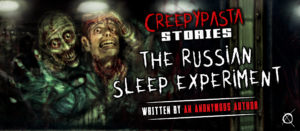
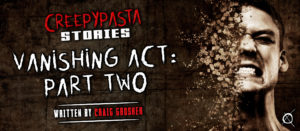

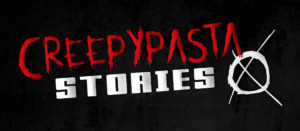
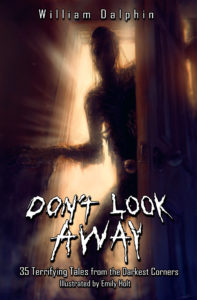
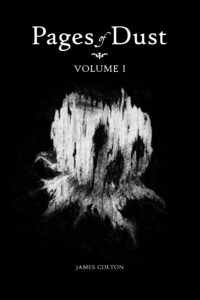
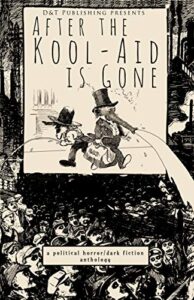
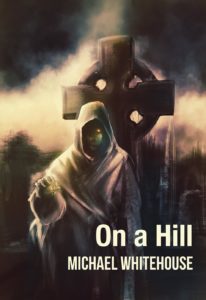
may i narrate your story on my podcast?
Would love the opportunity to not just narrate, but produce this story with multiple actors ands effects. Please let me know if this would be something you would grant your approval. Thank you.